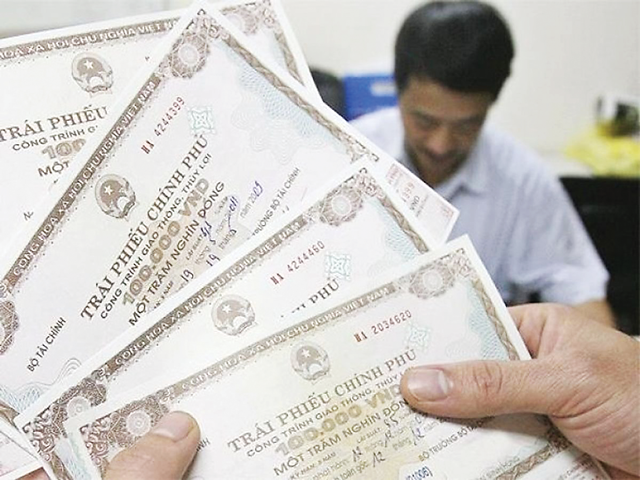Amid global trade tensions, Việt Nam increased bond issuance to boost public investment and domestic consumption.

HÀ NỘI — Facing mounting challenges from global trade tensions and growth pressure, Việt Nam increased the issuance of Government bonds, with a strategic focus on boosting public investment and domestic consumption.
These efforts aim to help the country achieve its ambitious GDP growth target of 8 per cent and support businesses amid volatile market conditions.
One of the key threats to Việt Nam’s economic growth is the looming risk of high tariffs imposed by the United States, which have put significant pressure on export activities – a crucial driver of the country’s economic expansion.
In response, the Government is proactively implementing fiscal measures to protect the economy, ensuring that growth remains despite external challenges.
Latest data from the Hà Nội Stock Exchange revealed that in the first four months of 2025, Việt Nam raised an estimated VNĐ130.8 trillion (around US$5 billion) from issuing Government bonds. This represents an increase of nearly 27 per cent compared to the same period in 2024.
This surge in bond issuance is part of a broader financial strategy to mobilise approximately VNĐ500 trillion ($19.3 billion), which represents 4 per cent of the country’s GDP.
These funds are intended to fuel public investments in key sectors such as railway infrastructure, electricity and domestic consumption – critical areas that can offset the declining export demand caused by trade uncertainties with the US.
The Ministry of Finance stated that the rise in public spending aims not only to ensure full disbursement of investment capital allocated to ministries, sectors, and localities, but also to address the unused budget from the 2021–23 period.
This unspent budget is estimated at around $19 billion, highlighting the importance of accelerating public investment to maintain economic momentum.
Prime Minister Phạm Minh Chính has urged the acceleration of public investment disbursement, calling it the “key to promoting growth”.
According to economist Cấn Văn Lực, a 1 per cent increase in public investment can contribute 0.06 percentage points to Việt Nam's GDP growth.
While Việt Nam continues to make significant strides in bolstering domestic investment, the country remains heavily reliant on exports, particularly to the US, which account for a large portion of its GDP.
However, the temporary US tariff of 10 per cent on Vietnamese goods remains a significant barrier. More concerning is the possibility of this tariff rising to 46 per cent in July, under policies introduced by US President Donald Trump.
If enacted, this tariff hike could reduce Việt Nam’s economic growth by up to 3 percentage points, according to estimates from BMI Research. Việt Nam is making great efforts to negotiate to delay or eliminate the tariff.
The success of Việt Nam's economic strategies will depend on several factors, including the outcome of ongoing bilateral trade negotiations with the US and efficiency of public spending programmes. — BIZHUB/VNS





